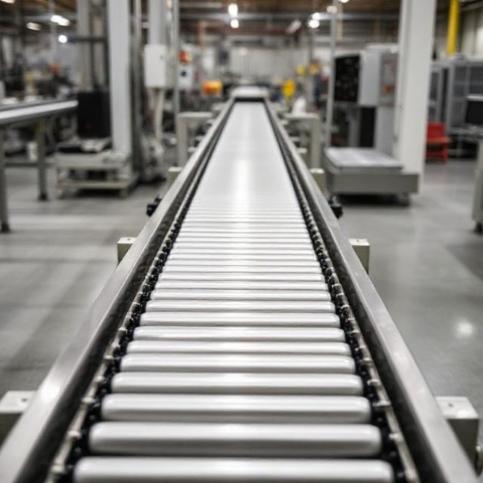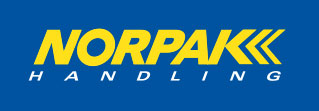Introduction
Conveyor systems are versatile in their features, designs and applications. However, based on specific applications, the design considerations can also vary significantly. That being said, some of the most common factors remain the same. This includes speed of the conveyor, the overall layout of the system and the flow of products it is meant to safely transport. Apart from these common factors, there is another key factor that many conveyor manufacturers forget, which is impact loading. This blog covers the basics of impact loading, including its negative effects, some probable solutions, and what factors to consider to offset impact loading.
What Is Impact Loading?
Impact loading is defined as a form of loading where the product is dropped onto the conveyor, as opposed to being placed on a conveyor carefully and strategically. The manner or mode of dropping can vary, such as dropping from a forklift, or dropping from a floor above. However, the end result is that impact loading places a lot of stress on the product and the conveyor due to the manner of placement. This is particularly true for roller conveyors, which come under significant stress.
Negative Effects Of Impact Loading
As mentioned above, roller conveyors are adversely affected by impact loading in the following ways:
Frame Damage
Frame damage is a major effect of impact loading on a roller conveyor. The conveyor rollers are held in place by hex holes created on the conveyor frame. When products are dropped from a height, these hex holes can face damage either in the form of a deformity or elongation. Consequently, the conveyor rollers can get knocked out of their place due to this action and cause significant problems during operation.
Roller Damage
The objects being dropped on the conveyor roller themselves can have a negative impact. Although these rollers are robust enough to handle heavy loads, they are not designed to handle high forces created by the impact. Therefore, they end with dents in some cases, or completely bend or even break in worst case scenarios, requiring replacement of the rollers in question. This leads to an increase in downtime and brings down the efficiency of the overall operation.
Reduced System Reliability
As mentioned in the point above, the damage caused to both the frame or the roller due to impact loading can bring down the overall reliability of the system. This can occur in three ways:
- Increase in downtime: As the frames and rollers get damaged, they need to be replaced more frequently, thereby directly impacting the downtime of the operation.
- Increase in maintenance costs: This is undesirable from a monetary standpoint as the replacement or rollers incurs a significant cost. Similarly, repairing small damages also drives up the overall maintenance cost for the user.
- Increase in safety risks: Lastly, if the workers are in close proximity to the conveyor, it can cause a significant safety hazard either in the form of a malfunctioning conveyor, danger from broken parts, or danger from the impact loading itself.
How To Design A Conveyor System For Impact Loading?
Even though roller conveyors are designed for smooth loading and not impact loading, the fact is that the latter is unavoidable in certain circumstances. So, if impact loading cannot be avoided, here are a few tips to ensure an optimal conveyor design:
Evaluate The Conditions
Some key conditions to consider when designing a conveyor system for impact loading includes drop height, weight of the product, and the frequency at which impact loading will take place.
- Drop height: This is a fundamental factor as it will determine the force that will act on the conveyor system.
- Weight of the product: The force of the object dropped onto the conveyor will also be determined by its weight. The heavier the object is, the more force it will exert at the point of contact.
- Frequency of impact loading: Is impact loading a regular occurrence, or are the instances limited? This will also determine the overall design of the conveyor.
Make Sure The Equipment Matches The Application And Budget
The conveyor system in question has to match not only the impact loading conditions, but it should also consider other applications. Lastly, if the conveyor is too expensive, then all the points above become moot. These solutions must be drafted under budget constraints for viable real world applications.
Contact Experts
Designing a system to prevent damage from impact loading is highly complicated. This is why it is best to contact expert system integrators, such as Norpak Handling. They will take care of all complex parameters for you.
Possible Solutions For Impact Loading
If roller conveyors are a bad match for impact loading, then what type of conveyor will fare better? Slider bed conveyors emerge as a viable alternative, as the smooth, continuous surface of the conveyor breaks or evenly distributes the force of the impact. The model SB is a classic example of a slider bed conveyor that is designed to handle light to medium loads. Contact us at Norpak Handling today at 905-885-7674 for more details about the conveyor.
Conclusion
Impact loading is a harmful yet at times unavoidable practice where the product is dropped onto the conveyor from a certain height. It can cause damage to conveyors, specifically roller conveyors by either damaging the bed or the rollers, increasing downtime and causing safety hazards. To avoid this, it is important to consider the drop height, weight of the product and frequency of loading when designing a conveyor. However, for optimal results, it is best to leave the designing to expert conveyor manufacturers and system integrators.
Norpak Handling is a prominent system integrator and conveyor distributor based in Port Hope, Ontario. Apart from the slider bed conveyor mentioned above, we also offer belt conveyors, chain conveyors, plastic conveyors and other wide varieties of specialized conveyor systems. Get in touch with us today at 905-885-7674 to make a real impact on your material handling operations!










